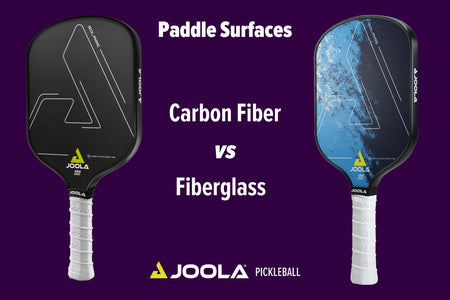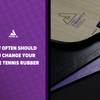
Pickleball Paddle Surfaces: Carbon vs Fiberglass
Two terms that you have probably heard associated with pickleball paddles and paddle surface construction are carbon fiber and fiberglass. But what are the differences between carbon fiber and fiberglass and which composition is the right one for your game?
Carbon Fiber
Carbon fiber is a stiff, durable material that offers refined touch and feel due to the material absorbing a pickleball’s energy at impact and more evenly distributing it across the face of the paddle. The result is less deformation on contact meaning greater control and shot precision.
Fiberglass
Fiberglass is a composite material that has less stiffness than carbon fiber, which means it will be more flexible on contact, or in other words, offer more rebound as the ball hits the paddle surface. The result is greater energy return to the ball resulting in a more powerful response.
Which JOOLA paddles offer a carbon fiber surface?
JOOLA has a wide selection of paddles featuring carbon fiber surfaces. Within JOOLA’s selection of carbon fiber paddles are four different surface types:
Carbon Friction Surface (CFS) – a textured surface that uses a longer-lasting, durable Carbon Flex 5 material. Provides optimal performance with access to high levels of spin, optimal feel, and raw power. Found in the Ben Johns Hyperion CFS 16 and Solaire CFS 14 paddles.
Carbon Grip Surface (CGS) – a high-quality surface constructed from a durable, long-lasting Carbon Flex3 material for a textured surface that offers optimal ball grip, feel and spin production. Found in the Radius, Vision Paddles and Method Paddles.
Carbon Touch Surface (CTS)- a smoother surface that reduces the amount of friction coming off the paddle allowing for enhanced feel and maximum control and touch. Found in the Method CTS 12mm paddle.
Which JOOLA paddles offer a fiberglass surface?
JOOLA has two fiberglass paddle offerings each utilizing a multi-layering process for impressive power and feedback. The Solaire FAS with a Fiberglass Abrasion Surface (sand-blasted process that creates a unique fiberglass textured surface for enhanced spin) as well as the Essentials Paddles.
Which JOOLA paddles offer a hybrid surface?
Carbon Abrasion Surface (CAS) – a multi-step, abrasion sand-blasted process that creates a unique, textured surface offering increased spin. CAS paddles feature a bottom layer of fiberglass with a layer of carbon on top for the best of both worlds. Found in the Ben Johns Hyperion CAS 16 and CAS 13.5 paddles.




